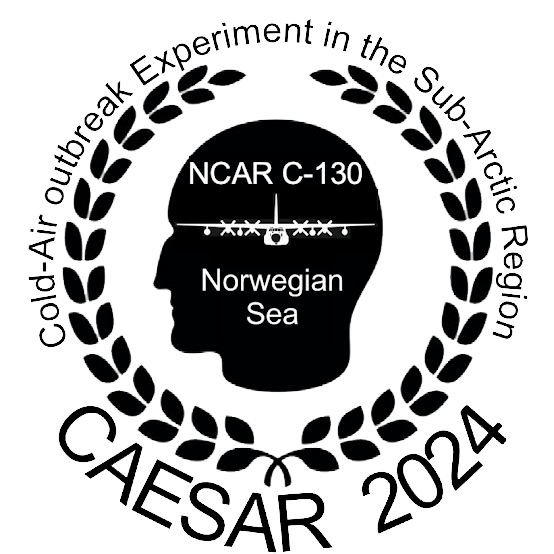"What, Where, When, Who, and Why?"
What?
The CAESAR campaign acronym is for Cold Air Outbreak Experiment in the Sub-Arctic Region. The project will take a modified Lockheed C-130 Hercules aircraft to profile the atmosphere in an effort to better understand the clouds that form when Arctic cold air leaves the polar ice cap and travels southward over the warmer water. The aircraft is sponsored by the U.S. National Science Foundation (NSF) and operated by the National Center of Atmspheric Research (NCAR). The aircraft has four turboprop engines, a 10-hour flight endurance, a 2,900 nautical mile range, and ceiling of 27,000 ft, and a payload capacity of up to 13,000 lbs. The video below gives you a sense of size and capabilities of this aircraft.
Where?
The project home base is Kiruna, Sweden. We plan 10 hour long research flights departing from Kiruna, flying toward the ice edge and return back to Kiruna.
When?
The field sampling is scheduled to take place February 22, 2024 to April, 7, 2024. Prior to this date, there will be installation of custom equipment on the aircraft, test flights, and a ferry flight from Colorado to Sweden. After the campaign the various research teams will analyze the data and report their findings to the public.
Who?
This project involves a sizable number of stakeholders, including government agencies who fund and support this research, small research teams from U.S. universities, as well as a number of individual researchers.
Funding Agencies
NSF: National Science Foundation: The NSF is the prime sponsor of this research. The statuatory mission of NSF is
To promote the progress of science
To advance the national health, prosperity, and welfare
To secure the national defense
NCAR: National Center for Atmospheric Research: NCAR is sponsored by NSF and operates the airplane. The mission of NCAR is
To understand the behavior of the atmosphere and related Earth and geospace systems
To support, enhance, and extend the capabilities of the university community and the broader scientific community, nationally and internationally
To foster the transfer of knowledge and technology for the betterment of life on Earth
University Groups
University of Miami: The team from the University of Miami will make use of remote sensing observations of mixed-phase clouds to characterize their partitioning between liquid and ice as a function of the cloud evolution to understand the processes that determine this partitioning.
University of Wyoming: The team from the University of Wyoming will contribute finely resolved vertical transects of precipitation and kinematic data from airborne Doppler radars, and in situ cloud and precipitation probes to characterize the vertical structure and circulations of Marine Boundary Layer convection.
Colorado State University: The team from Colorado State University will constrain primary ice nucleating particle sources and concentrations associated with cold air outbreak cloud systems, in order to better understanding of the evolution of microphysical processes and their description in collaborative cloud modeling simulations.
University of California, Riverside: The team from the University of California, Riverside will characterize aerosol size distributions, cloud condensation nuclei, and black carbon particle concentration to better understand aerosol-cloud-precipitation processes. The UCR team will also collaborate with an aerosol-cloud-precipitation researcher from the University of Wyoming.
University of Oklahoma: The team from the University of Oklahoma will have primary responsibility of coordinating with NCAR on the use and processing of the cloud physics probe to better understand aerosol-cloud-precipitation processes.
SUNY College at Oswego: The team from SUNY College at Oswego will use data collected during CAESAR to document the characteristics of boundary-layer convective precipitation.
University of Michigan: This team will evaluate stable isotopes from cloud water during CAESAR
Why?
Marine cold air outbreak result in cold air over a warmer ocean. This causes strong heat and moisture transport from the ocean to the atmosphere. These processes have several important consequences for the Earth system. In the atmosphere, convective cloud systems produce heavy snowfall. The cold air outbreak may also spawn polar lows, which are mesoscale low pressure systems that affect shipping as well as oil and gas production in the sub-Arctic regions. The atmospheric processes occuring during these cold air outbreaks are poorly represented in weather forecast models. We will dedicate more in-depth information on these processes in future episodes.
